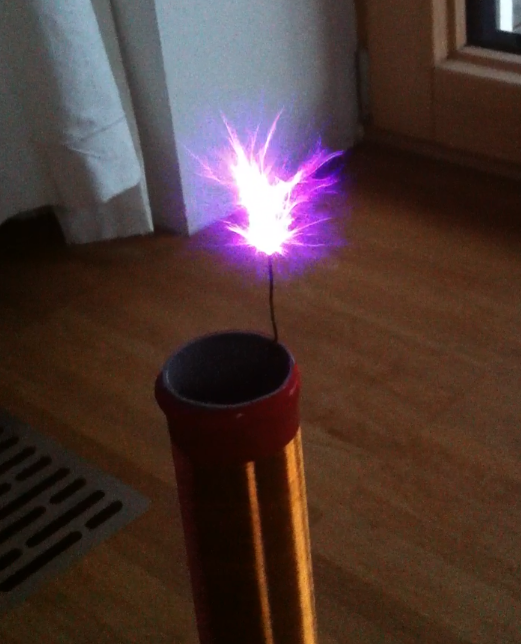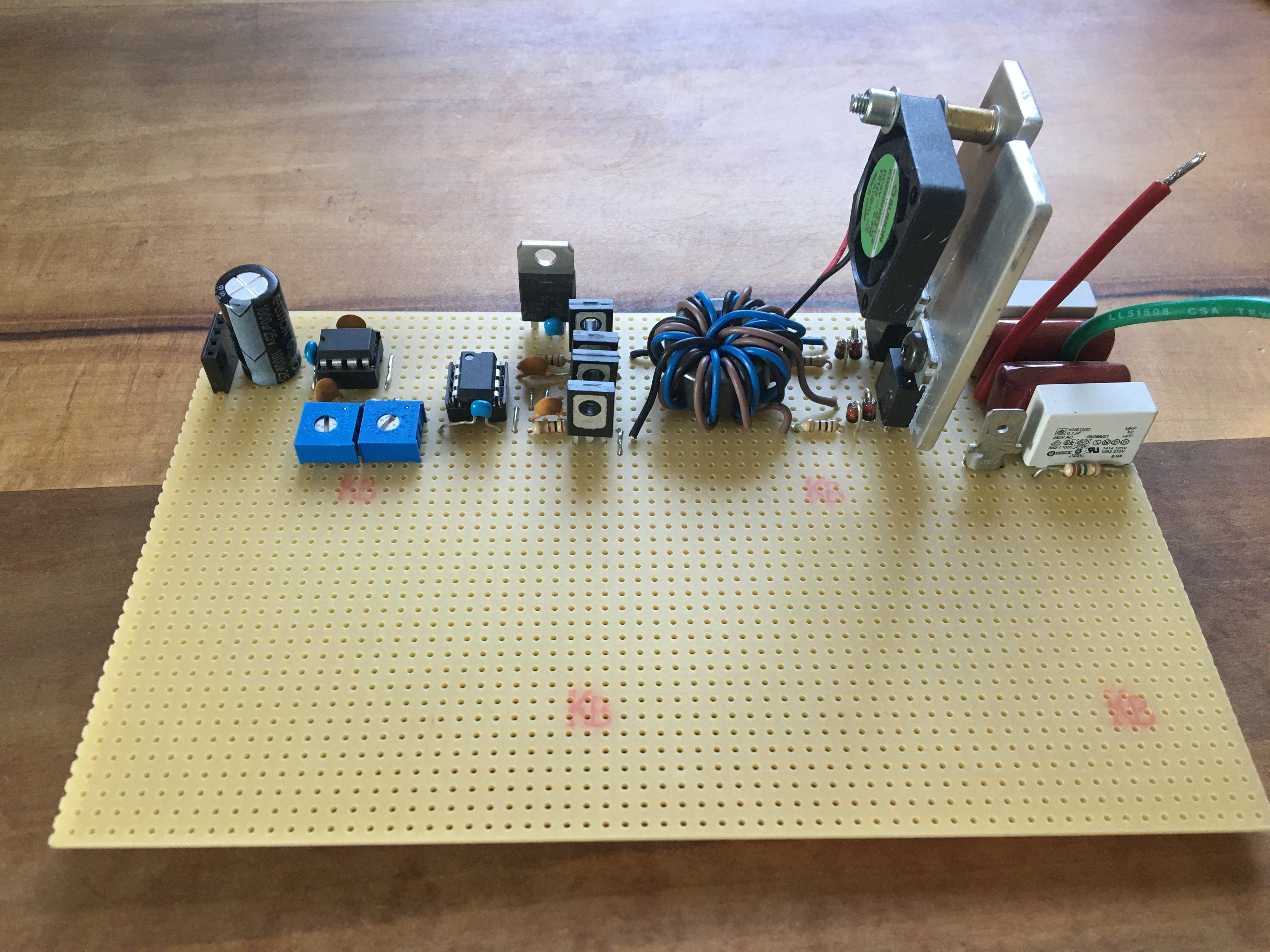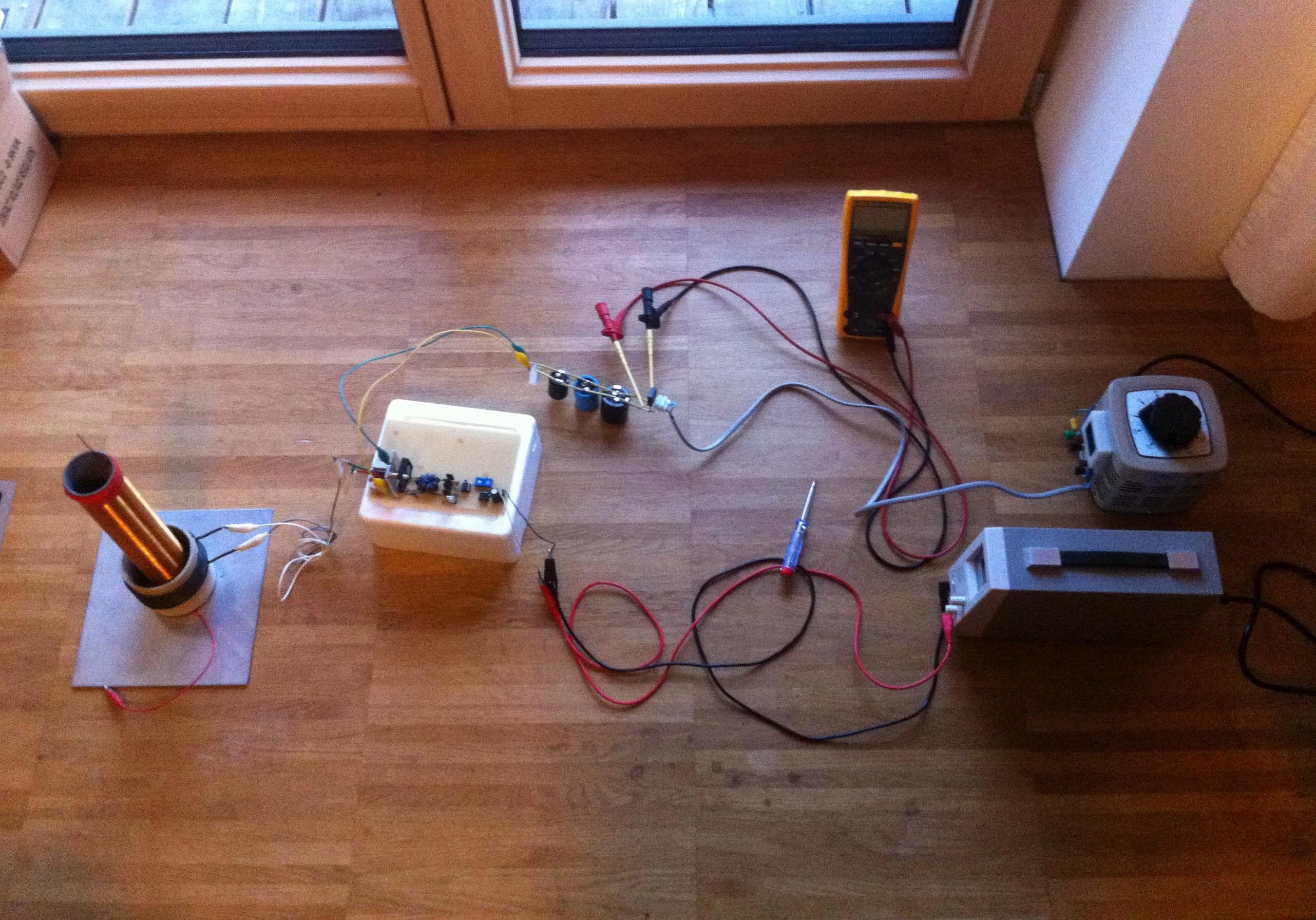Simple Solid State Tesla Coil
This article is about a simple solid state Tesla coil which I built a few years ago. I do not recommend rebuilding it and do not provide building instructions here. High voltage can be dangerous. The Tesla coil produces high voltage in the range of several \(\mathrm{kV}\) and a frequency of several hundred \(\mathrm{kHz}\). The power stage of this Tesla coil is feed by the rectified output of a variac which produces up to \(250\,\mathrm{VAC}\) at its output. Besides that, the Tesla coil can cause electromagnetic interference problems and may even damage sensitive electronic devices.

Circuit and Setup
The circuit is indeed very simple. On the left side, there is a tunable oscillator based on the well-known 555 timer chip. Its frequency can be set via a potentiometer. The output of the oscillator is feed into a driver stage built with BD139/BD140 BJTs. The output of this driver stage is connected to a self wound gate drive transformer which drives a half bridge consisting of two IRF740 power MOSFETs.

The complete setup can be seen in the picture below. The oscillator/driver stage is supplied with \(12\,\mathrm{V}\) by my lab bench power supply. The output of this supply is floating, which is crucial since the power stage, i.e. the MOSFET half bridge, is supplied via the rectified output of a variac whose primary is directly connected to mains voltage. This setup, besides being very dangerous, puts a lot of stress on the internal isolation of the lab PSU and may damage it. I do not recommend such a setup by any means. Always use an isolation transformer when working with variacs!

Before I built this Tesla coil, I built a similar one but with an IR2104 integrated half bridge driver instead of a gate drive transformer (instead of using the IR2104, I would now use the IR2184, which has the same pinout as the IR2104 but drives the MOSFETs with higher gate currents), see the following picture.

Test Results
The following video shows the Tesla coil in action. The size of the spark varies as I tune the frequency of the oscillator. I am pleased with the output of this Tesla coil, though I think there is a lot of room for improvements. Producing sparks of this size should easily be possible with much lower supply voltages of e.g. \(24\,\mathrm{V}\) instead of the rectified output of a variac. You may want to check out the YouTube channel Teslaundmehr. There you can find solid state Tesla coils producing sparks as long as the secondary itself.
